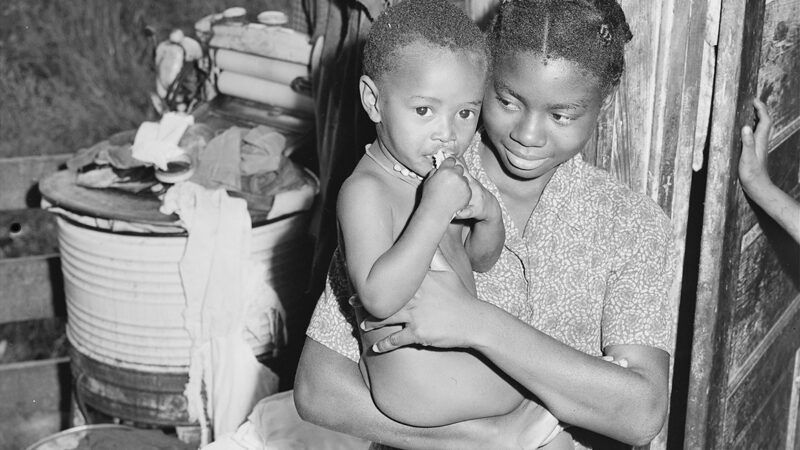Review: When the Government Sent a Photographer To Document Living Conditions in Coal Towns
Russell Lee's 1946 photographs shows the squalor coal miners and their families lived in before mechanization.

The best antidote for politicized nostalgia that hails an imagined idyllic yesteryear full of abundant blue-collar jobs? Taking a good, hard look at how those workers actually lived.
"Power & Light," a temporary exhibit at the National Archives Museum in Washington, D.C., displays dozens of pictures taken in 1946, when the federal government dispatched photographer Russell Lee to document living conditions in coal mining towns across Appalachia. What he captured is not glamorous or desirable. One family documented by Lee's photos paid $7 per month ($124 in today's money) for a home with no running water. They shared an outhouse with "four or five" other families.
They weren't unique. Electricity and indoor plumbing are rare sights in the photos. Only half the mines even had washhouses for the workers at the end of their shifts.
Nowadays, even after recent declines, America produces more coal than it did in 1946 while employing about a third as many miners. Those who still earn their living this way have far safer, cleaner conditions. Mechanization may have eliminated some jobs, but it also lifted families out of a squalor that seems almost unbelievable today.
